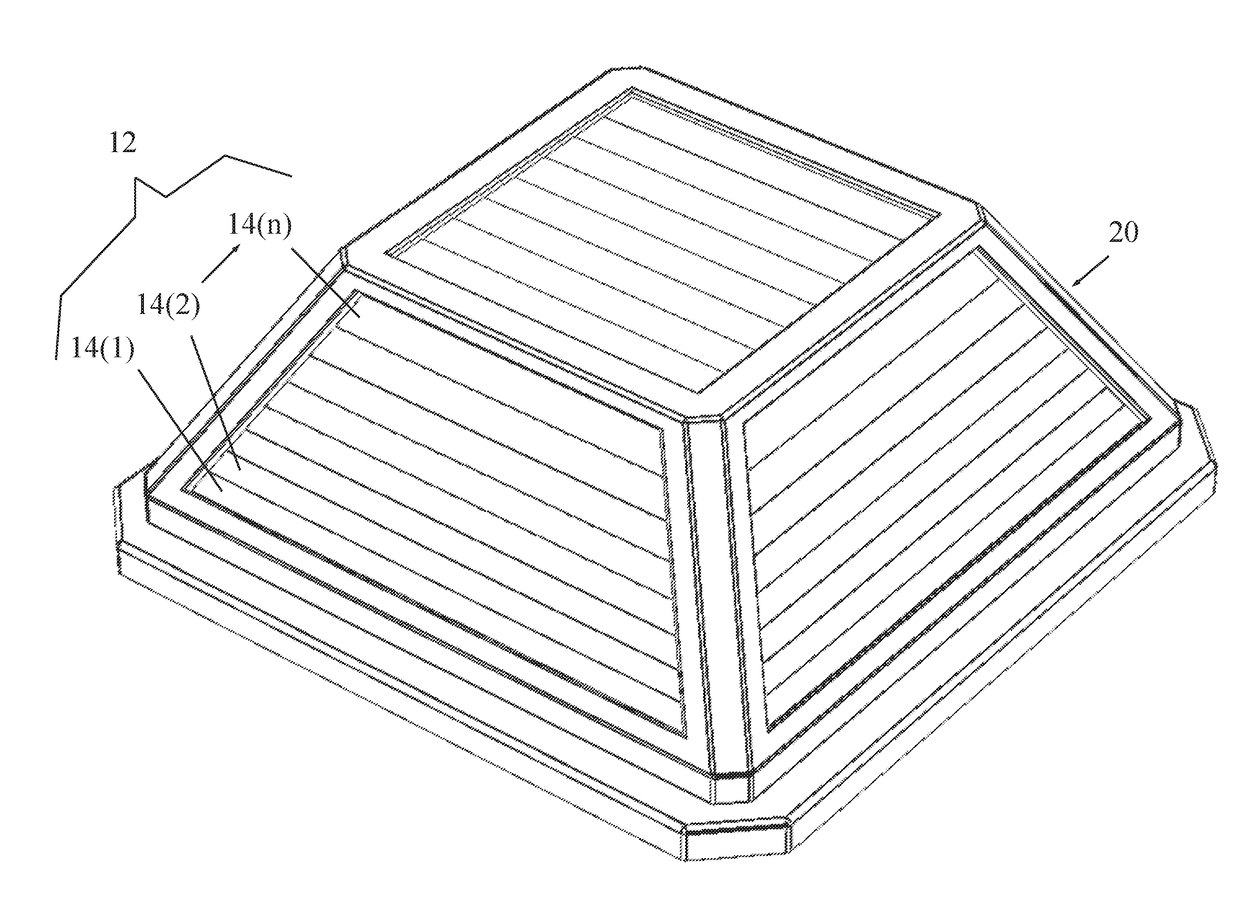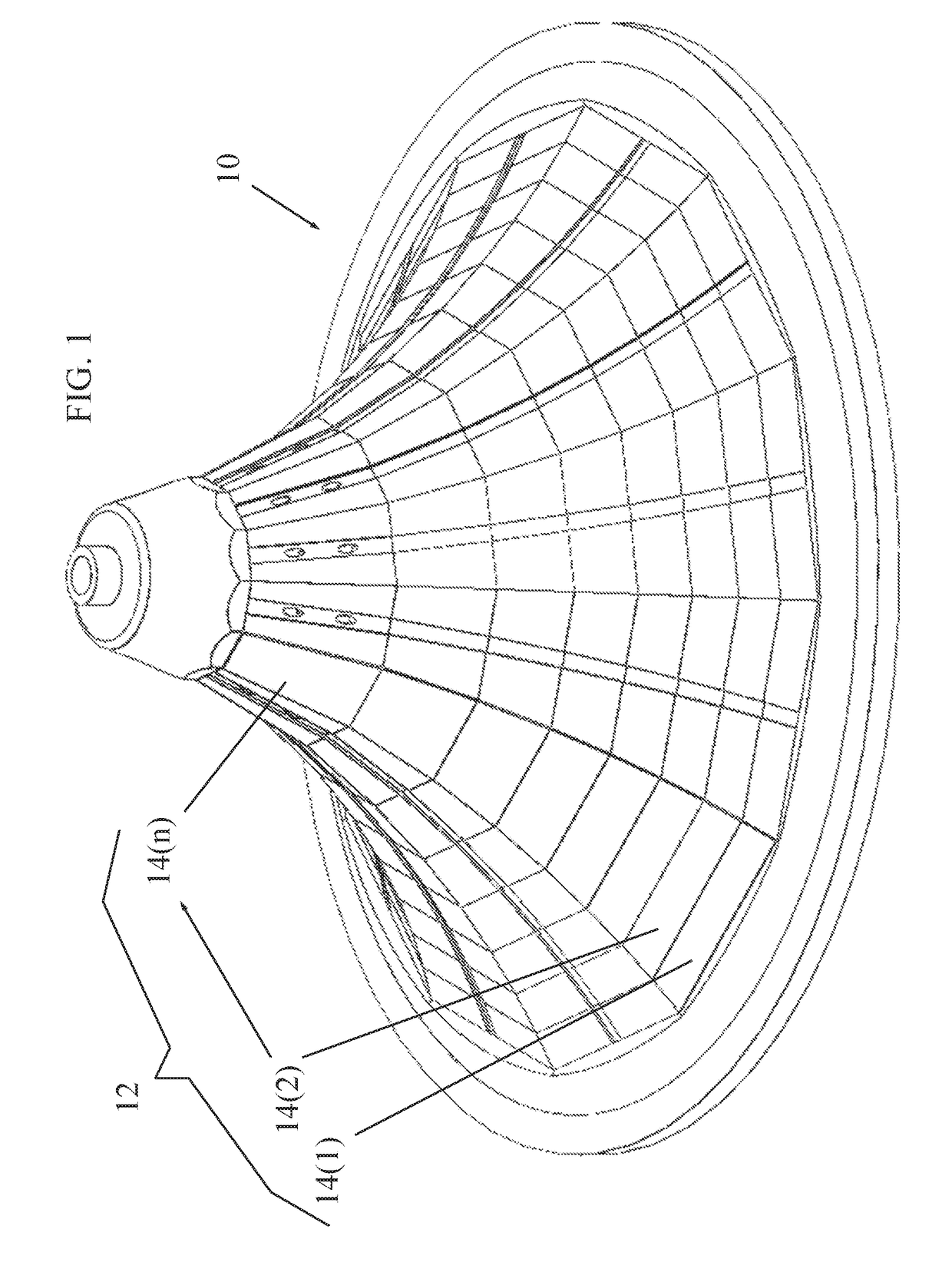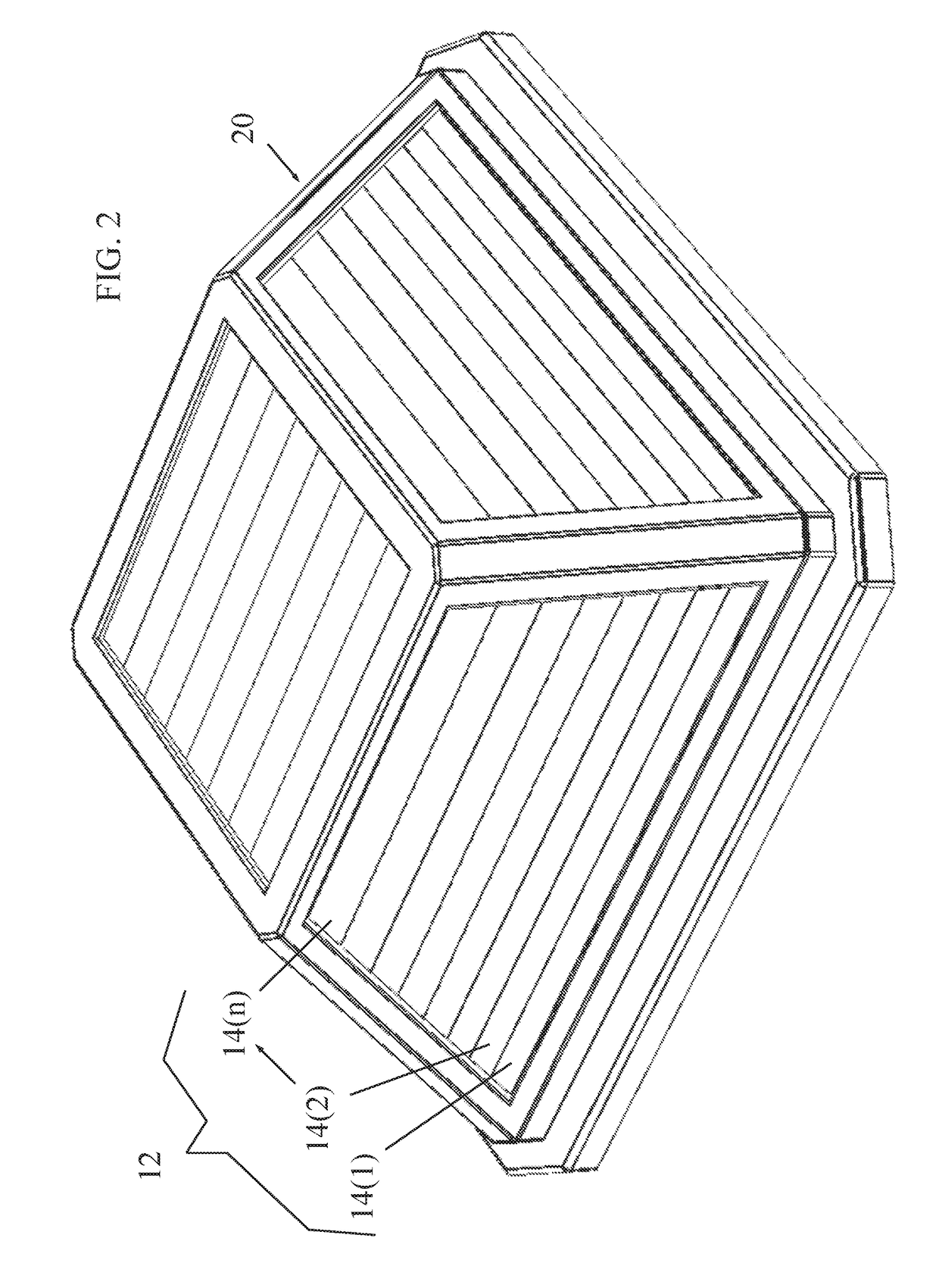Array of unequally shaped solar panels
a solar panel and array technology, applied in the field of solar lighting, can solve the problems of photovoltaic cells, melting of solder joints, and degrading their lifetime, and achieve the effect of preventing hot spots and avoiding unequal current flow through the panels
- Summary
- Abstract
- Description
- Claims
- Application Information
AI Technical Summary
Benefits of technology
Problems solved by technology
Method used
Image
Examples
Embodiment Construction
[0014]Reference is now made to FIG. 1, which illustrates a solar panel array 10, constructed and operative in accordance with a non-limiting embodiment of the present invention.
[0015]The solar panel array 10 includes a plurality of m sub-arrays 12 of solar panels 14, or as shown in the drawing, n solar panels 14(1) up to 14(n). In each sub-array 12, the solar panels 14 are electrically connected in series. In the illustrated embodiment, each sub-array 12 is curved (e.g., concave), but the invention is not limited to this shape, and the sub-arrays can be convex or any other regular or irregular shape, curved or not curved. The sub-arrays 12 may be electrically connected to one another in parallel or serial according to the battery charging requirement.
[0016]The solar panels 14 are any kind of photovoltaic cell for generating electricity from solar energy, such as but not limited to, monocrystalline, polycrystalline or amorphous film cells.
[0017]For each sub-array 12 of solar panels 1...
PUM
 Login to View More
Login to View More Abstract
Description
Claims
Application Information
 Login to View More
Login to View More - R&D
- Intellectual Property
- Life Sciences
- Materials
- Tech Scout
- Unparalleled Data Quality
- Higher Quality Content
- 60% Fewer Hallucinations
Browse by: Latest US Patents, China's latest patents, Technical Efficacy Thesaurus, Application Domain, Technology Topic, Popular Technical Reports.
© 2025 PatSnap. All rights reserved.Legal|Privacy policy|Modern Slavery Act Transparency Statement|Sitemap|About US| Contact US: help@patsnap.com



